[ad_1]
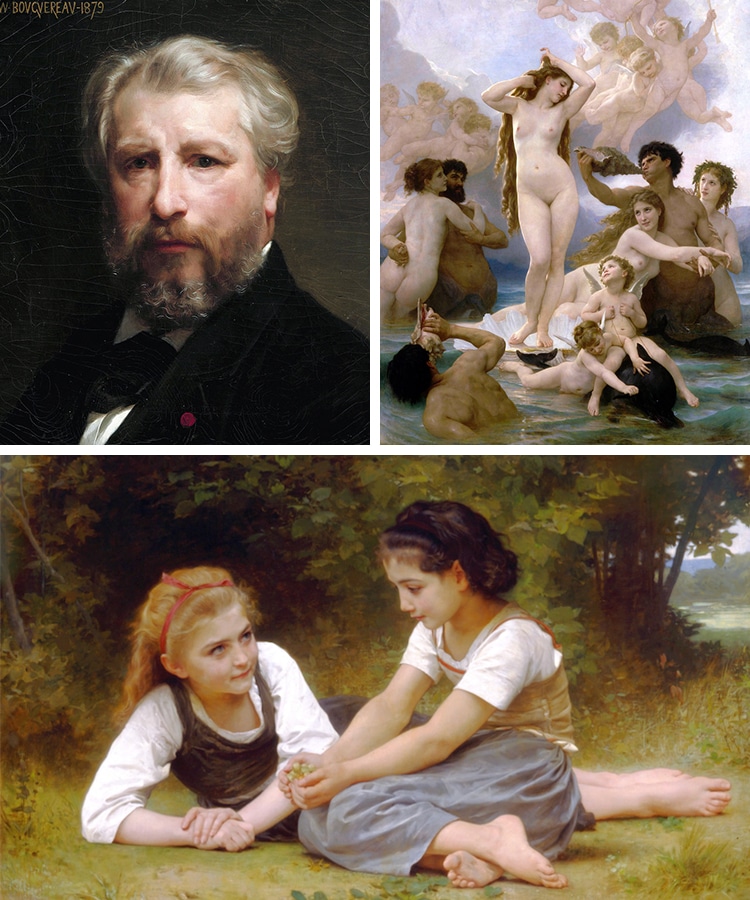
The most famous artist of all time is a difficult question for anyone to pinpoint. Today, many people might say Vincent van Gogh, Claude Monet, or Frida Kahlo. However, just a couple of decades ago, people might have given different answers. In a similar fashion, the name William-Adolphe Bouguereau may not be familiar to many these days, but in the later 19th century, he was one of the most beloved painters around.
Born and trained in France, Bouguereau was an upholder of the French academic style. His talent for creating beautiful, idealized worlds made him a popular artist among wealthy patrons, and his dedication to traditional approaches kept him a favorite in the prestigious Salon for his entire life. He also worked parallel to the Impressionists, who sought to subvert the values he displayed in his polished pictures. But while Bouguereau’s fame faded after his death, the Impressionists rose up—showing how quickly artistic tastes can change.
Here, we will learn more about Bouguereau’s art and why the Impressionists fought against it.
Who is William-Adolphe Bouguereau?
|
William-Adolphe Bouguereau |
|
|
August 19, 1905 (La Rochelle, France) |
|
William-Adolphe Bouguereau (1825–1905) was a 19th-century French painter who worked in the academic style. After training at the École des Beaux-Arts, he spent several years in Rome studying the paintings of Renaissance masters and eventually winning the Prix de Rome prize for one of his works. It was in Italy that he nurtured a love of classical subjects. Upon returning to France, he continued working in the traditional academic style, exhibiting paintings regularly at the Paris Salon. His carefully rendered figures and bucolic worlds made him a favorite among the elites, but it was these same “superficial” traits that turned the Impressionist artists against his style. Due to his fame and success, Bouguereau became symbolic of the values of the Salon.
Academic Style and the Paris Salon
The academic style described the artistic values upheld by art academies in Europe. In France, these ideas were taught at the École des Beaux-Arts where Bouguereau himself studied. They reinforced traditional approaches, including idealism of the human form and depictions of conservative, conventional subject matter, like historical, mythological, and allegorical scenes as well as portraiture.
The Paris Salon‘s traditional taste was overwhelmingly accepted until the 19th century when an increasing number of European artists began embracing the avant-garde. While the Academy would reject most modernist pieces, some famously managed to secure a spot, including Édouard Manet‘s nude Olympia in 1863 and John Singer Sargent‘s Portrait of Madame X, a contemporary portrait exhibited in 1884.
For the most part, however, pieces that did not adhere to the academy’s traditional tastes were rejected, forcing forward-thinking artists to take the exhibition of their work into their own hands. This led to the decline of the Paris Salon in the 1880s, and, most importantly, culminated in a new tradition: Salon alternatives. This would ultimately result in the formation of the first Impressionist exhibitions.
Characteristics of Bouguereau’s Art
Naked Female Form
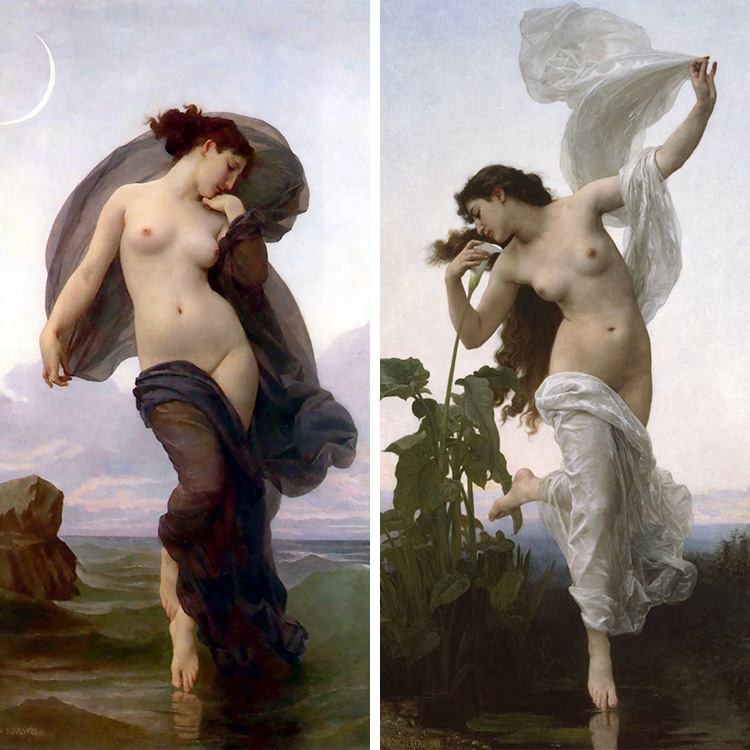

Left: William-Adolphe Bouguereau, “Evening,” 1882 (Photo: Wikimedia Commons, Public domain)
Right: William-Adolphe Bouguereau, “Dawn,” 1881 (Photo: Wikimedia Commons, Public domain)
A master at rendering the human body, one of the most distinguishing characteristics of Bouguereau’s art is a strong interest in the naked female form. He was greatly inspired by the Renaissance master Raphael and took a similar approach in his own work. His female figures, whether portraits or symbolic representations of the time of day possess graceful and ethereal qualities.
Interest in Greek and Roman Mythology
Bouguereau’s subject matter kept with the traditions prized by the salon. One of the most reoccurring themes in his work referenced Greek and Roman mythology. Depicting nymphs, goddesses, and other classical figures allowed Bouguereau’s polished style to shine. In these paintings, he created an idealized world of beautiful men and women and cheerful cherubs.
Pastoral Scenes
Another subject that interested Bouguereau was pastoral scenes. However, he was not interested in portraying the reality of country life like Realist painters Jean-François Millet and Gustave Courbet. Instead, Bouguereau leaned into the romantic idea of these professions, portraying beautiful shepherdesses and children collecting flowers and food.
Bouguerueau Versus the Impressionists
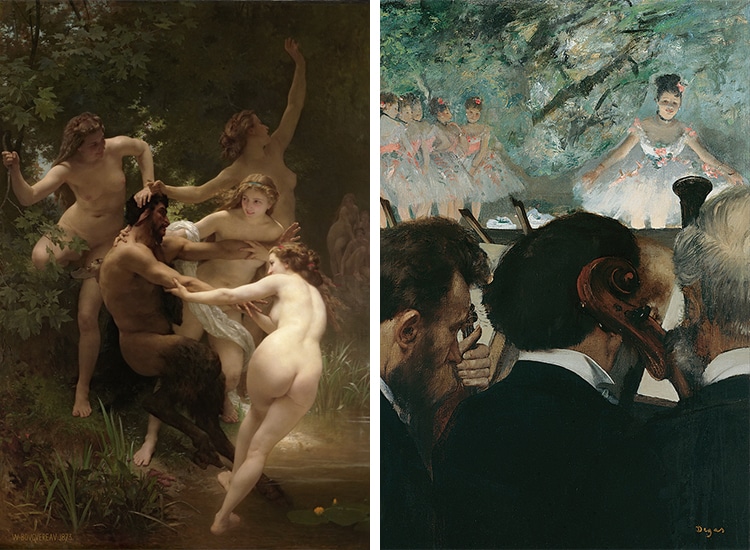

Left: William-Adolphe Bouguereau, “The Nymphs and Satyr,” 1873 (Photo: Wikimedia Commons, Public domain)
Right: Edgar Degas, “Musicians in the Orchestra,” 1872 (Photo: Wikimedia Commons, Public domain)
As an upholder of the academic style—which prized realism and traditional approaches to painting—Bouguereau enjoyed great success during his own lifetime. However, he also lived parallel to the rising Impressionist movement which fought the strict limitations of the prestigious Salon. Many Impressionist painters disparaged Bouguereau’s work as symbolic of all that was wrong with the institution, marking it as archaic and superficial. Bouguereauté was a derogatory term invented by Edgar Degas and his followers to describe art with a licked finish, which was popular among French academic artists.
Legacy
Despite the success Bouguereau achieved during his lifetime, his name faded away from art circles in the early 1900s as Impressionism and Modern art became more popular. People once again criticized the waxen, polished way his figures were rendered.
By the 70s, however, appreciation for his ethereal, traditional style resurfaced and his art began to appear in exhibitions across the U.S. and Canada. Today, he is considered one of the most important painters of the French academic style, even if he isn’t a household name anymore.
Frequently Asked Questions
What is William-Adolphe Bouguereau known for?
William-Adolphe Bouguereau is known for his academic-style paintings, which feature a strong interest in the naked female form, depictions of mythological subjects, and polished finish.
Where is William-Adolphe Bouguereau from?
William-Adolphe Bouguereau is from La Rochelle, France.
What style of art is Bouguereau?
William-Adolphe Bouguereau painted in the French academic style.
Related Articles:
Romanticism: An Art Movement That Emphasized Emotion and Turned to the Sublime
How Vincent van Gogh’s Art Evolved During His Short Life
14 Famous Female Painters Every Art Lover Should Know
Who Was Paul Signac? Learn About the Art and Life of One of Pointillism’s Founders
[ad_2]
Source link


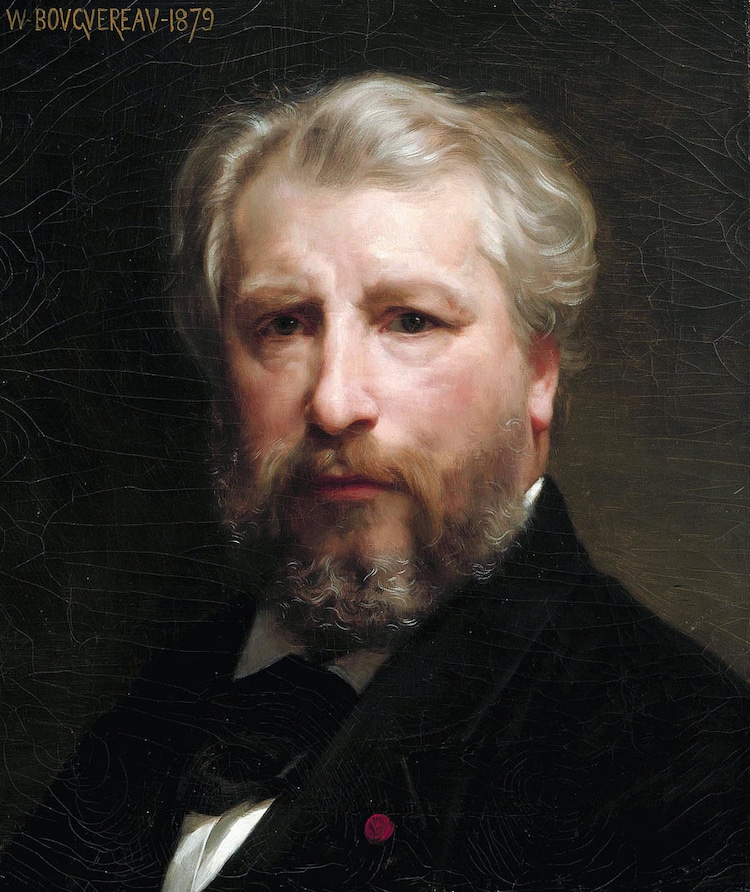
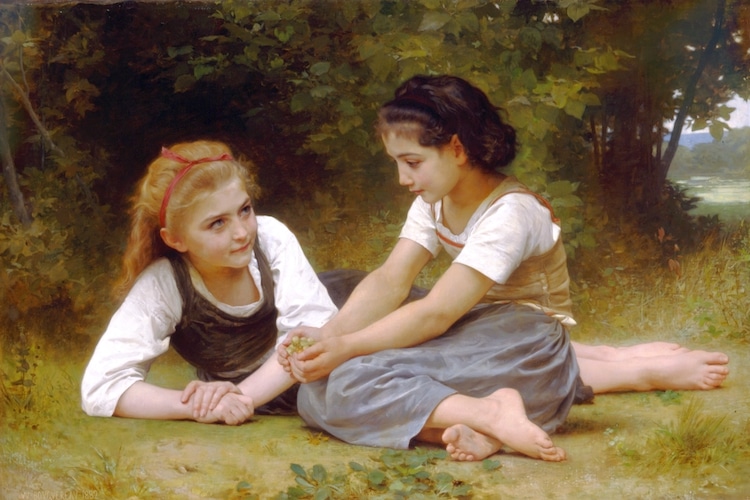
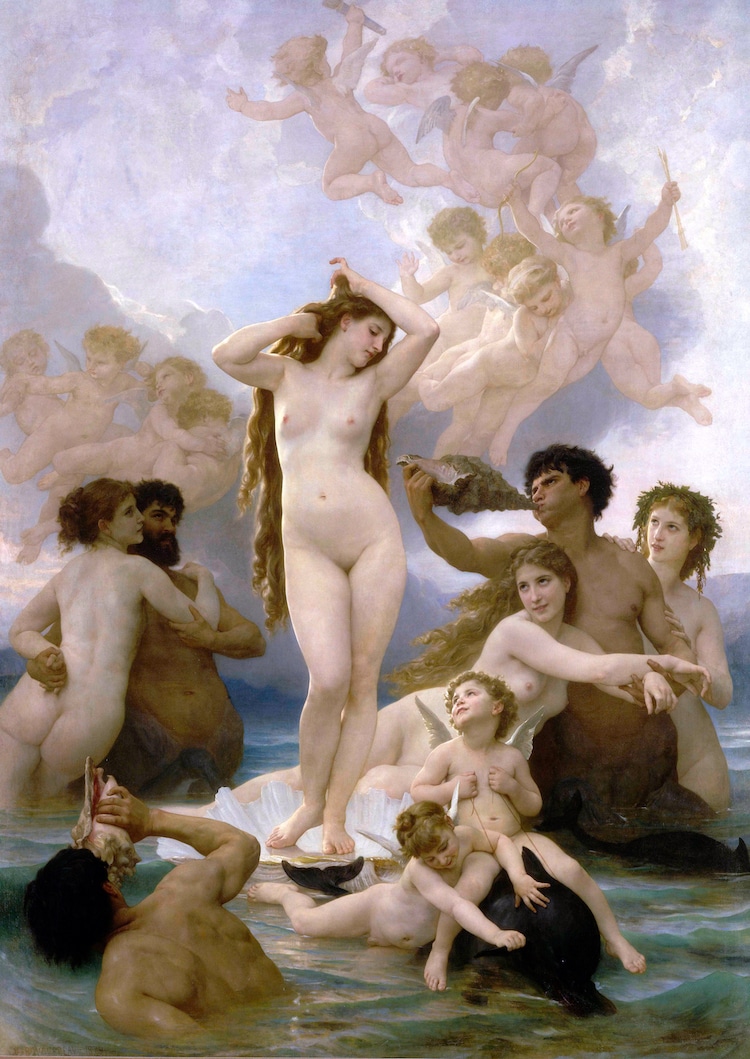
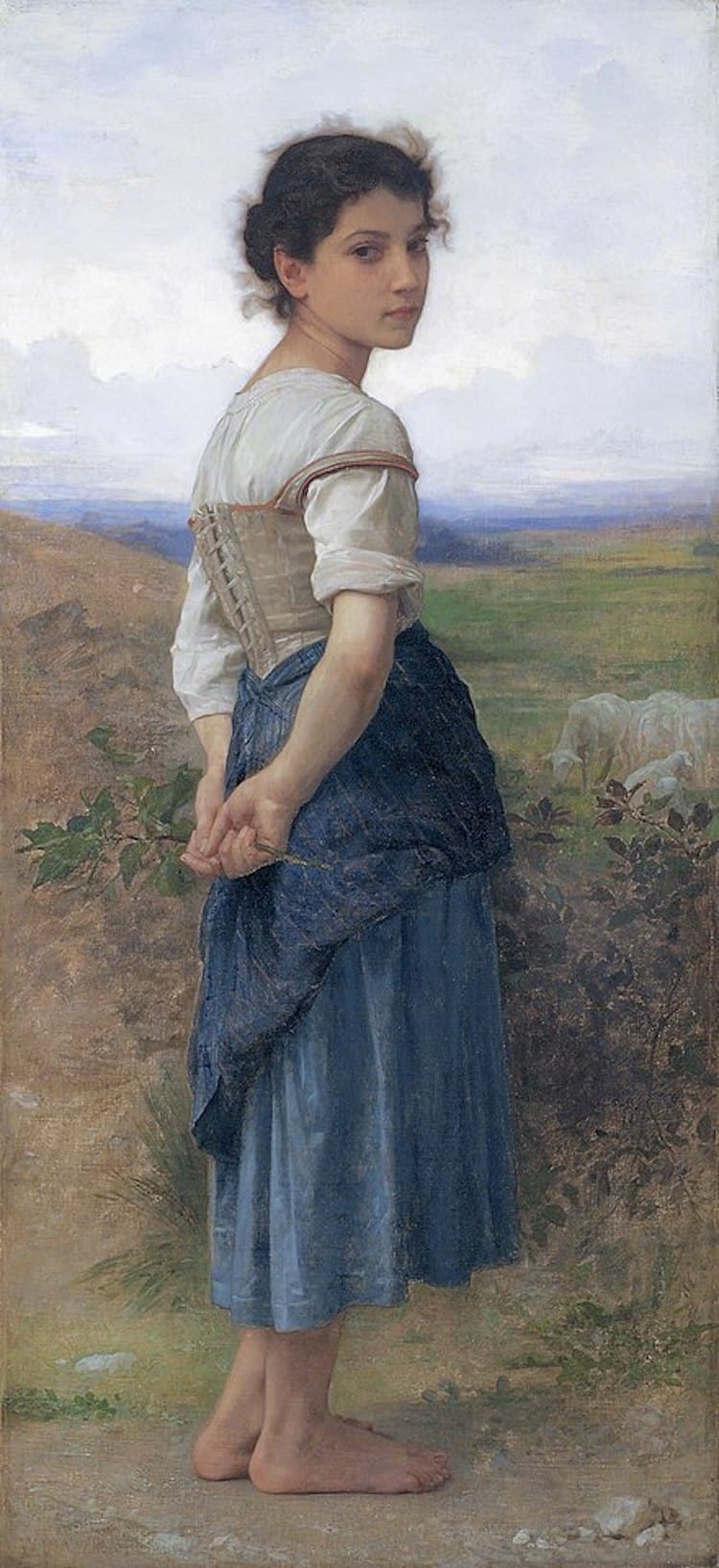
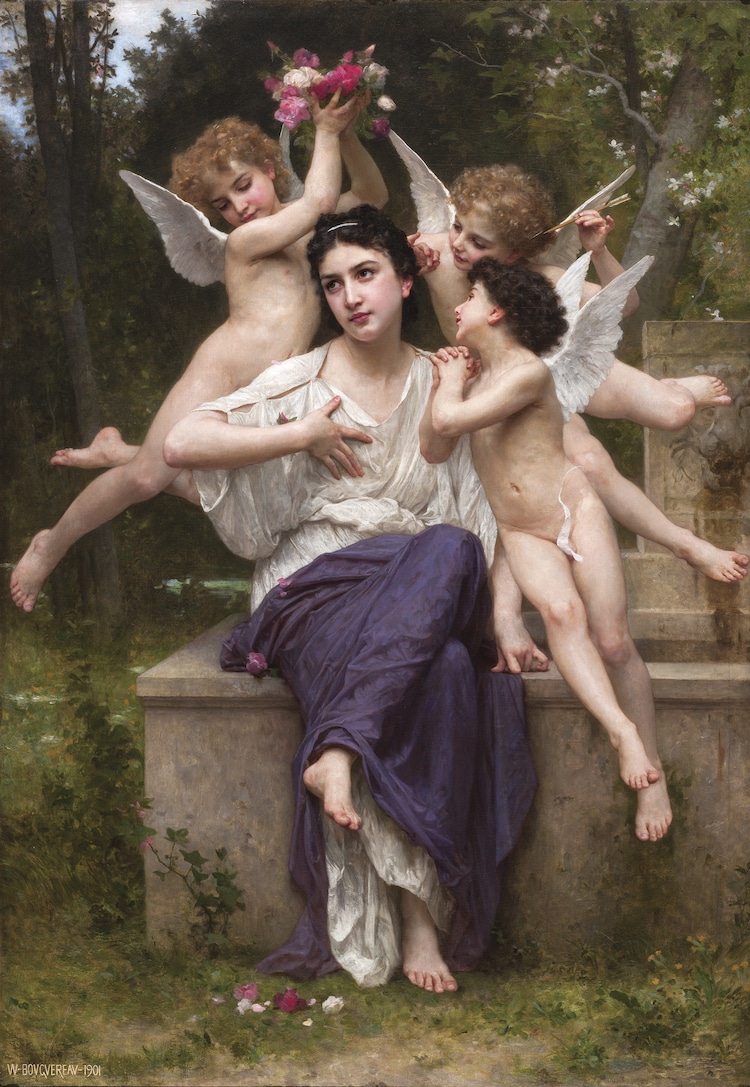


GIPHY App Key not set. Please check settings